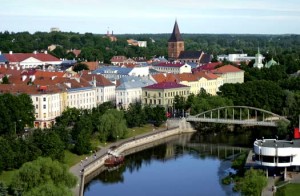- Estonia’s annual average surface water availability is 12 billion m3 and the groundwater potential is 3.2 billion m3.
- The rivers are characterized by short flow distances and low flow rates. Only 10 rivers are longer than 100 km. The longest is the Võhandu (162 km) and the largest is the Narva, with a catchment area of 56,200 km2, only about one-third of which is within Estonia.
- Of Estonia’s approximately 1,200 lakes, half have a surface area of less than 0.03 km2. The largest, Lake Peipsi, covering some 3,500 km2, is the fourth largest lake in Europe. It was the subject of in-depth case studies in the first and second editions of the World Water Development Report.
- Water consumption has decreased significantly since Estonia regained its independence in 1992. For a quick comparison, combined water use in 2006 was half that of 1992. Between 1992 and 2007, agricultural water consumption decreased by almost a factor of seven, and the average price of water increased nearly 25 times. Daily per capita water consumption fell from 188 litres in 1992 to 90 litres in 2007. The main reasons for the abrupt decrease in overall water use were the introduction of a water use charge, an increased unit price, the closure of a pulp factory in the capital, Tallin, adoption of water saving technology in industry, and reductions in numbers of livestock and in agricultural production after the system of collective farms collapsed.
- Groundwater resources are used mainly for municipal water supply and to some extent in industrial processes.
- In line with the price increase and deployment of water saving technology, groundwater consumption decreased by one-third from 1992 and amounted to 50 million m3 in 2006.
The section “Did You Know…?” is taken from the 3rd World Water Development Report “Water in a Changing World“.


